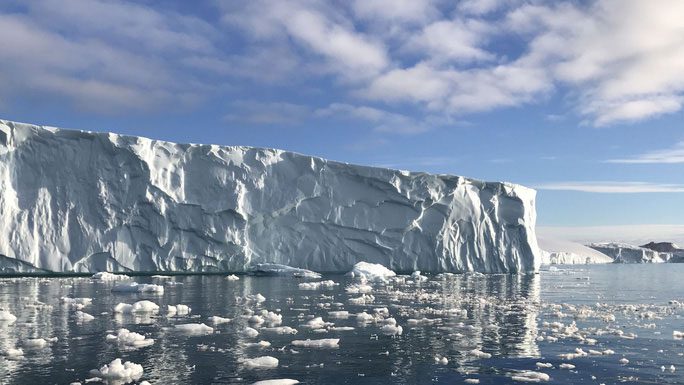A study published in Nature Geoscience reveals that the origin of the massive amounts of mercury in Greenland’s glaciers remains a significant question.
Natural mercury is released by wildfires, volcanic eruptions, or erosion. However, over the past 150 years, human industrial activities have also actively pumped vast amounts of mercury into the atmosphere, some of which gradually falls back to the ground and mixes into water sources.

Glaciers in Greenland are melting – (Photo: Andrew Freedman)
It is possible that global circulation of water or air has inadvertently pushed this heavy metal towards the North Pole. However, what is strange is that three glaciers in southwestern Greenland have mercury pollution levels that are two times higher than other rivers in the Arctic region.
According to climate scientist Rob Spencer from Florida State University (FSU), the lead researcher, the lack of industrial activities in Greenland suggests that this mercury likely existed in the eroded rocks beneath Greenland’s ice. The melting glaciers have inadvertently released the “death metal” that may have been dormant for millennia.
The publication Science Alert cites the study: “Greenland could very well be a forgotten ‘hotspot’ for natural mercury emissions. Even if we limit industrial mercury emissions starting tomorrow, the rapid melting of ice in Greenland could undermine human efforts to reduce this heavy metal pollution to safe levels.”
Currently, mercury concentrations in the rivers and glacial fjords of Greenland are equivalent to those in polluted waterways in industrial areas of China, which are estimated to produce about one-third of global mercury pollution. This concentration is expected to continue rising as climate change accelerates the melting of glaciers on this island near the Arctic.
This alarming phenomenon could severely impact the seafood export industry as well as valuable marine ecosystems in Greenland. Scientists are still investigating and analyzing the phenomenon to find solutions. According to the authors, this discovery indicates that strategies for managing mercury pollution need to be reassessed, as this natural source has never been accounted for.



















































